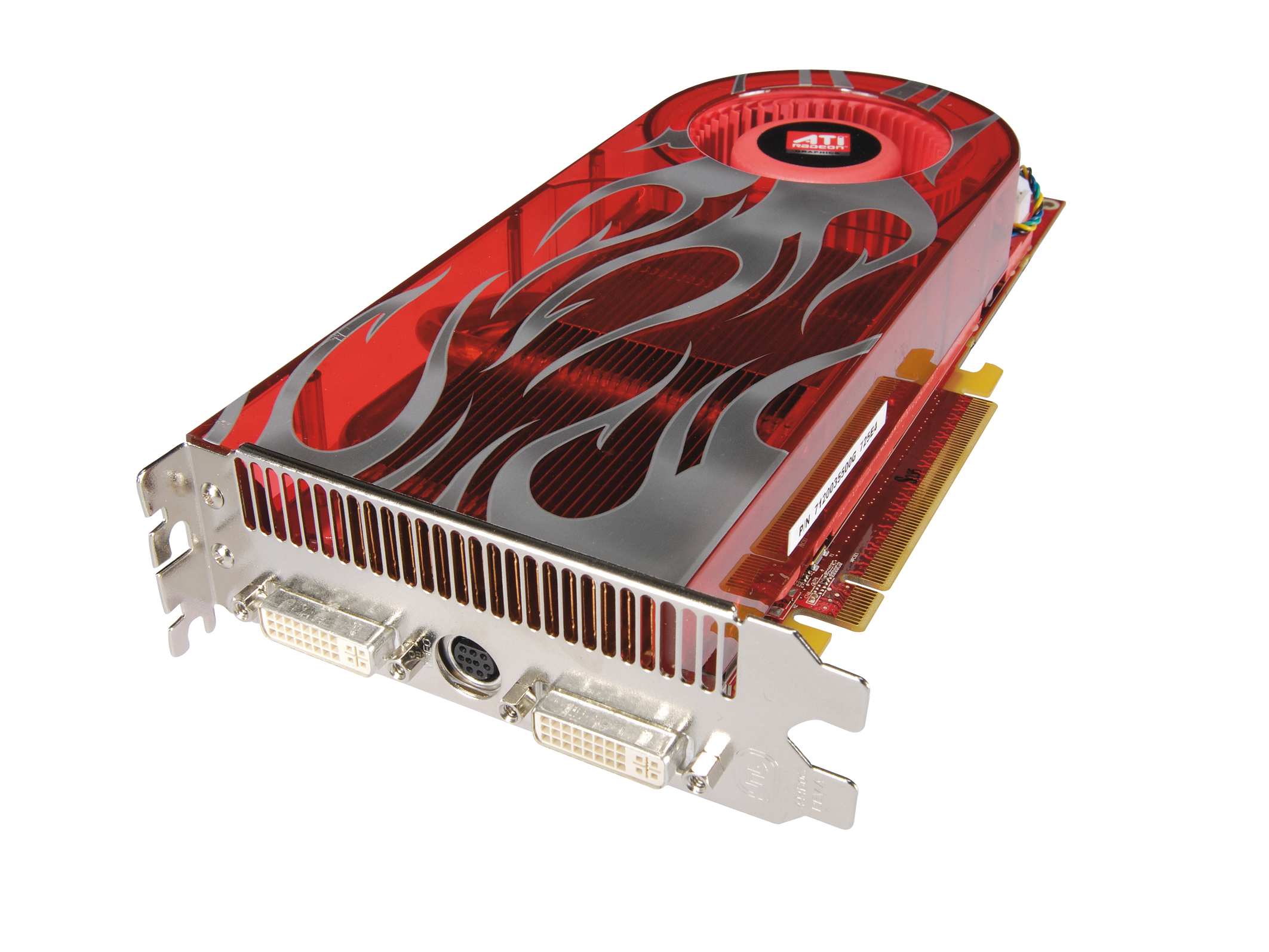TechRadar Verdict
Performance from Radeon HD 2900 XT isn't as high as we'd hoped, and doesn't give Nvidia's 8800GTX any real competition
Pros
- +
Impressive peak throughput
Cons
- -
Not very quiet
- -
In a pricing no-man's land
Why you can trust TechRadar
Unless you're an avid gamer, you've probably missed the fact that Nvidia currently finds itself in something of a unique position.
Its G80 family is the only one to offer support for Microsoft's DirectX 10, and the 8800GTX holds the title of the single fastest card currently available too. It's rare that one chipmaker can hold such a lead, and the release of ATI's latest GPU doesn't change the landscape quite as much as expected.
Looking purely at the specification and its heritage, the ATI Radeon HD 2900 XT has strong potential. Described by ATI as its second generation unified shader architecture (the main requirement for DirectX 10), its origins can be traced back to the graphics brains of the Xbox 360, aka Xenos.
There are 320 stream processors inside the core, arranged as 5-way shader processors, effectively giving you 64 shader units that can handle vertex, pixel and geometry operations.
The memory bandwidth is fundamental to the performance of modern graphics chips, and the chip previously known as R600 has lifted the bar yet again.
The 512-bit ring memory bus offers a peak throughput of 106GB/s, which is faster than any other card out there - impressive as it uses existing graphics memory. These initial cards pack 512MB of GDDR3 memory, clocked at 828MHz, with the graphics core clocked at an equally non-standard 740MHz.
These are strong figures for a modern graphics card, but there are some details that do lag behind the current performance leader.
Sign up for breaking news, reviews, opinion, top tech deals, and more.
This core has only half the texture units of the 8800GTX, and only 16 ROPs (Raster Operations) as opposed to the GTX's 24. So despite the huge memory bandwidth, it still trails the GTX noticeably. 3DMark06 and indeed most of the games we tested put this card more on a par with the 8800GTS 640MB, which costs roughly the same.
HD streaming
This card isn't just about games though. ATI has included a Universal Video Decoder, which takes the load of handling the bitstream for HD content off the processor and handles it in the graphics card.
In testing we saw processor usage more regularly in the ten per cent bracket as opposed to 40 per cent, even with H.264 material. The fact it has an audio pass through to the HDMI connector makes this a particularly tempting card for playback, although there will be more affordable versions of this GPU available later in the year.
There are a number of technologies in R600 that are potentially brilliant steps forward, but without the support these could go unused.
The tessellation engine, for instance, is capable of some impressive geometry manipulation, but as a non-DX10 feature, developers aren't going to want to write code specifically for this card's market - it'll be too small. The Custom Filter Anti-Aliasing (CFAA) supports several modes, but will take ATI's driver developers time to get right, although you can expect driver updates to improve performance.
R600 isn't a frugal graphics chip though, something that is given away by the shear size of the cooler. With a power requirement above 200W, you're going to need a sizeable PSU in order to get this card running (500W and above).
Once you do, you'll be keen to hide your machine - the cooler is loud and still manages to run hot to the touch. This card at least isn't one for your silent media centre machine.
As a taste of things to come, you could be forgiven for thinking that there is little to get excited about the rest of the 2000 series, but it's the various spins of the 2600 and 2400 that offer the most potential.
For instance, the UVD is present in all the chips, and they're all DirectX 10 compliant. More importantly, the rest of the family utilises TMSC's 65nm production process, which means they boast lower operating power requirements and thus heat output - ideal for passive cooling systems and mobiles.
ATI has also done away with the cumbersome master/slave configuration needed for CrossFire, instead using an internal connector similar to SLI, although this mechanism uses two connectors - it's still easier than what has gone before.
Overall, ATI's first DirectX 10 card isn't the performance king that the industry expected. This isn't as good as the 8800GTX, and it has trouble distinguishing itself from the slightly more affordable 8800GTS much of the time, at least not the 640MB version.
With the pricing so close, there's little to separate the cards, unless you need the HD playback and have a Blu-ray or HD-DVD drive. More importantly, this isn't a price sweet-spot for the hardcore or occasional gamers - it just doesn't offer enough for either. Wait for the cheaper members of this family and let this one go.
